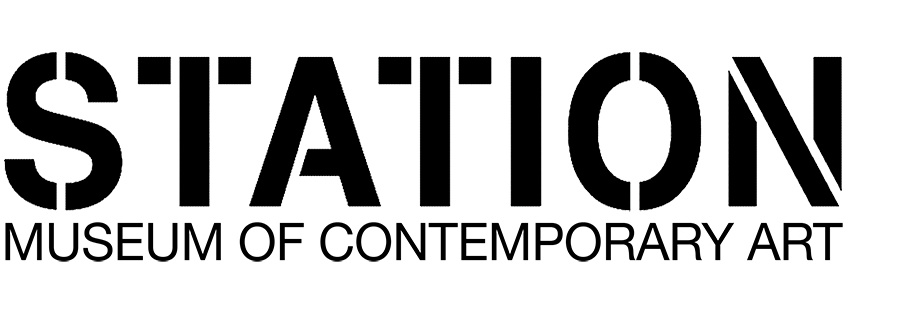
- 1502 Alabama St.
- Houston, TX 77004
- USA
- 713-529-6900
- station.museum.houston.tx@gmail.com
- Closed Monday & Tuesday
- Open Wednesday - Sunday, 12PM - 5PM
- Free Admission!

Palestinian violence, the response of a desperate and horridly oppressed people, has been stripped of it’s context and the terrible suffering from which it arises: a failure to see that is a failure in humanity, and that context doesn’t make it any less terrible but at least situates it in a real history and real geography.
Edward Said (1)
Edward Said’s meditation on the tragedy of suicide bombers, penned in exile on the eve of his untimely death, encapsulates the politics of Made in Palestine. The exhibition is moving because it addresses the plight of a people who have been systematically dehumanized by a state that denies their legitimate claim to the land it occupies. History, in these terms, is as much a site of contestation as any other. And so too is art. The challenge, then, is to make this oppression palpable while asserting a more enduring truth.
In this regard, Samia Halaby’s map of Palestine– a seamless continuum From the Mediterranean to the Jordan River (2003,) is in telling contrast to the checkerboard-apartheid present. The conflict that ushered in the state of Israel in 1948-49 destroyed hundreds of Palestinian villages and communities that survived became refugee camps for the displaced. Since then a war of attrition has been waged. Businesses and farms have been confiscated.
Permits for new home construction or maintenance are routinely refused and public services are crumbling for lack of investment. In the work environment, Palestinians are systematically forced into low-paying occupations or denied employment all together. Under these conditions of “engineered underdevelopment,” a full one-fifth of the population of Israel live as second-class citizens.(2) The situation in the West Bank and Gaza is much worse. There, more than 3 million Palestinians are without rights under an armed occupation. Over 42% of the land in the West Bank and Gaza is now administered by Israeli settlement councils representing some 204,000 settlers (400,000 including East Jerusalem). Tens of thousands of Palestinians are crowded into squalid refugee camps in the Gaza strip and a burgeoning network of Israeli settlements and Jewish-only service roads cuts through the West Bank, effectively isolating Palestinians in scattered enclaves. (3) Since the eruption of the current intifada in September, 2000, Palestinians have endured military incursions, the destruction of homes, curfews, bombings, shelling, targeted assassinations, and now a wall is being built to rob them of still more territory.(4)
Halaby’s Palestine is fluid, and it undulates with life. Borders have no place here, nor armies of occupation, nor displaced refugees. The map asserts that the peoples of Palestine can learn to live together as equals, but first an injustice must be overcome. Made in Palestine is a step in that direction. It humanizes and ennobles the Palestinian struggle, and that is it’s most important, universal message. (5)
Allan Antliff, Canada Research Chair at the University of Victoria, Canada
1. Edward Said, “Dignity, Solidarity and the Penal Colony,” CounterPunch 25 September, 2003 http://www.counterpunch.org/said09252003.html
2. Samia A. Halaby. Liberation Art of Palestine: Palestinian Painting and Sculpture in the Second Half of the 20th Century (Ramahal and New York: Samia A. Halaby Publisher, 2001), 36. The latest maneuver came in the fall of 2003, when Israel’s parliament passed a “law of residency” prohibiting Palestinians without Israeli citizenship from living in Israel. This cuts off the last legal avenue for Palestinians to immigrate to Israel, and forces those who do marry non-Israelis to either leave or remain separated from their loved ones. Chris McGreal, “Israeli law on residency will split families, say critics,” Guardian Weekly, (August 7-13, 2003): 4.
3.www.wikipedia.org/wiki/Israeli_settlements
4. Nigel Parry, “Is it a Fence? Is it a Wall? No, it’s a Separation
Barrier,” The Electronic Intifada, 1 August 2003 http://electronicintifada.net/v2/article1775.shtml .
5. To quote the Israeli branch of the War Resisters International: “The oppressors, not the oppressed, are the ones who need to prove their commitment to peace. . . . The Jews of Israel have come to accept the hypocritically and cynically mistaken notion that they are the victims of rebelling Palestinian Arab inhabitants. The truth is the Palestinians are victims of Israel and the Israelis are the victims of their leaders and the ideology [of nationalism]. . . . True peace is only a peace among equals. . . . Democracy has to be based on human rights for all . . . this is why there are no limits to democracy.” See “There is no way towards peace, peace is the way,” (1994) reprint It’s All Lies: Leaflets, Underground Press, and Posters The Fusion of Resistance and Creativity in Israel (Israel: Tel-Aviv, 2003), 24.